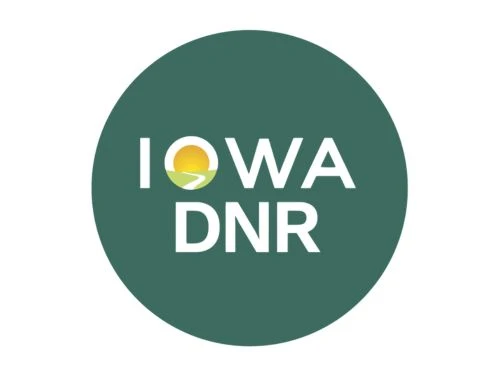St. Mary’s Island, in Mills County, was once an island in the middle of the Missouri River prior to channelization and levee installation. Today, it’s one of Iowa’s largest contiguous grasslands.
Covering 2,513 acres, St. Mary’s Island was created over time in the mid to late 2000s by the U.S. Army Corps of Engineers as part of a congressional mandate to mitigate habitat loss due to channelization of the Missouri River from Sioux City to St. Louis. The area is managed by the Iowa DNR’s Nishnabotna Wildlife Unit, through a license agreement with the Corps.
“We’ve created some pretty solid grassland habitat here,” said Matt Dollison, wildlife biologist with the Iowa Department of Natural Resources’ (DNR) Nishnabotna Unit. “We’ve worked really hard to prevent tree encroachment and to promote grassland habitat.”
The Nishnabotna Unit works with a local producer to prepare the soil for prairie conversion and to plant and maintain food plots. They seeded 162 acres to prairie last year, and next fall, they will plant another 95 acres to prairie. Roughly one third of the area on the dry side of the levee is burned each spring to promote the prairie.
“Some of our most heavily used and successful dove fields are here,” he said. “We planted four dove plots this year coving 67 acres.” As if on cue, a dozen mourning doves took flight from the gravel lane as Dollison’s truck rolled slowly past the sunflowers.
In the coming weeks, this field of green will turn bright yellow as the sunflower heads appear and they become a backdrop for senior pictures, engagement photos, family pics and from selfie sticks.
But on Sept. 1, these fields will host hundreds of hunters looking to bag the most popular migratory game bird in the county – the mourning dove. The wildlife unit often allows the previous year’s crops to remain idle for a year or two, which provides important weedy habitat for pheasant and quail broods.
Some deer and turkey hunting occur in the timber by the river, but its pheasant and quail that take center stage in late October.
“St. Mary’s Island is one of the better dove and pheasant hunting areas in southwest Iowa. It’s large, you don’t have people on top of each other here,” he said “If you come out here on a weekday, you may have the whole place to yourself.”
The levee is part of a network that follows the Missouri River on its east side. It has an access lane on top that allows the levee board to conduct routine inspections and maintenance. It is also a good place to hike or ride a bike to see wildlife from an elevated viewpoint.
“From a hiking and biking standpoint, there’s opportunity on the levee for three miles, one way. The vehicle access control gates can make biking a little difficult, but if you hit it right in the late summer around the time the levee is hayed, they may all be open. There’s fishing potential if you’re willing to walk to the river. You can paddle the river and use it as a stop off point. There’s wildlife watching, just a lot of opportunity here,” Dollison said.
Home to lesser known and less common species
The Iowa DNR’s Multiple Species Inventory and Monitoring program has conducted surveys here and have confirmed the presence of barn owls, Henslow’s sparrows, northern harriers, peregrine falcons, regal fritillary, Olympia marble (one of the few places it’s found in Iowa), dreamy duskywing, wild indigo duksywing, plains pocket mouse, tri-colored bat and spadefoot toad.
